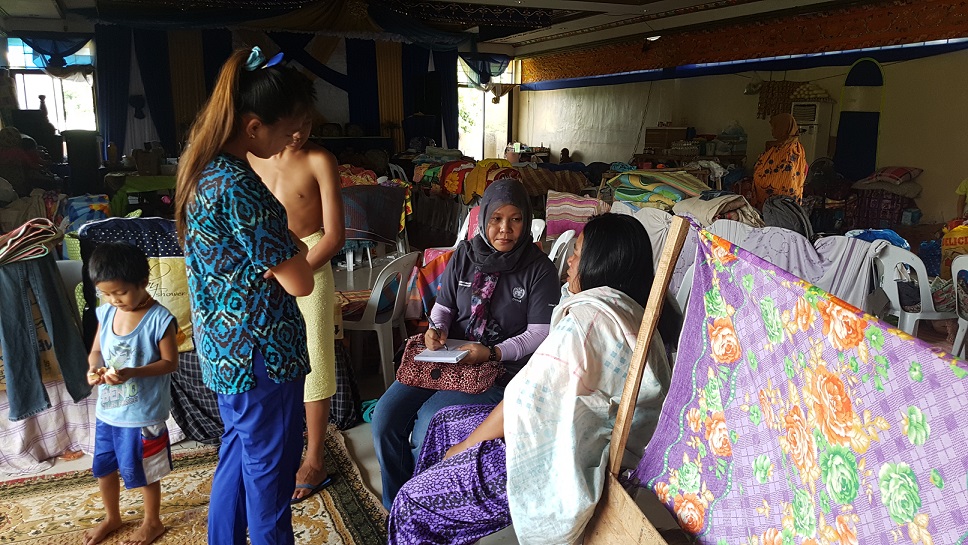
Nearly 360,000 remain displaced by Marawi conflict
The fighting which began on 23 May in Marawi City between government forces and the Islamic State-linked Maute Group and the Abu Sayyaf Group continues. As of 10 July, 16 barangays of the City were declared clear while four remained under the control of the attackers, according to President Rodrigo Duterte. Drone footage shows extensive damage to the commercial centre of the city.
The conflict has displaced nearly 360,000 people from Marawi City and surrounding municipalities as of 2 August, the Department of Social Welfare and Development (DSWD) reports. An estimated 90 per cent of the displaced people remain with relatives and friends while the rest stay in 75 evacuation centres. Nearly 90 per cent are concentrated in Lanao del Sur and Lanao del Norte provinces, of which close to 30 per cent are hosted in Iligan City.
A call to scale up assistance to 77,000 people displaced in the east of Lake Lanao
Active fighting, limited road networks and transportation have hampered humanitarian organizations from reaching all of the municipalities that host internally displaced persons (IDPs). Of particular concern is the plight of more than 77,000 people who fled to municipalities in the east of Lake Lanao —from Masiu to Bubong —according to the International Committee of the Red Cross. They need timely and regular delivery of food and medical supplies yet a sense of “neglect and lack of support” is spreading due to the limited help they have received.
More than 160 humanitarian organizations that report activities to OCHA’s Who-does-What- Where database have so far concentrated their support to Iligan City and its neighbouring municipalities such as Balo-I, Pantar, Saguiaran and Pantao Ragat to which access has been regularly secured. They have yet to fully reach 12 of the 39 municipalities in Lanao del Sur that are hosting IDPs, or 26,200 people. Full and unimpeded access to all of the affected areas is essential for IDPs to access humanitarian assistance and services.
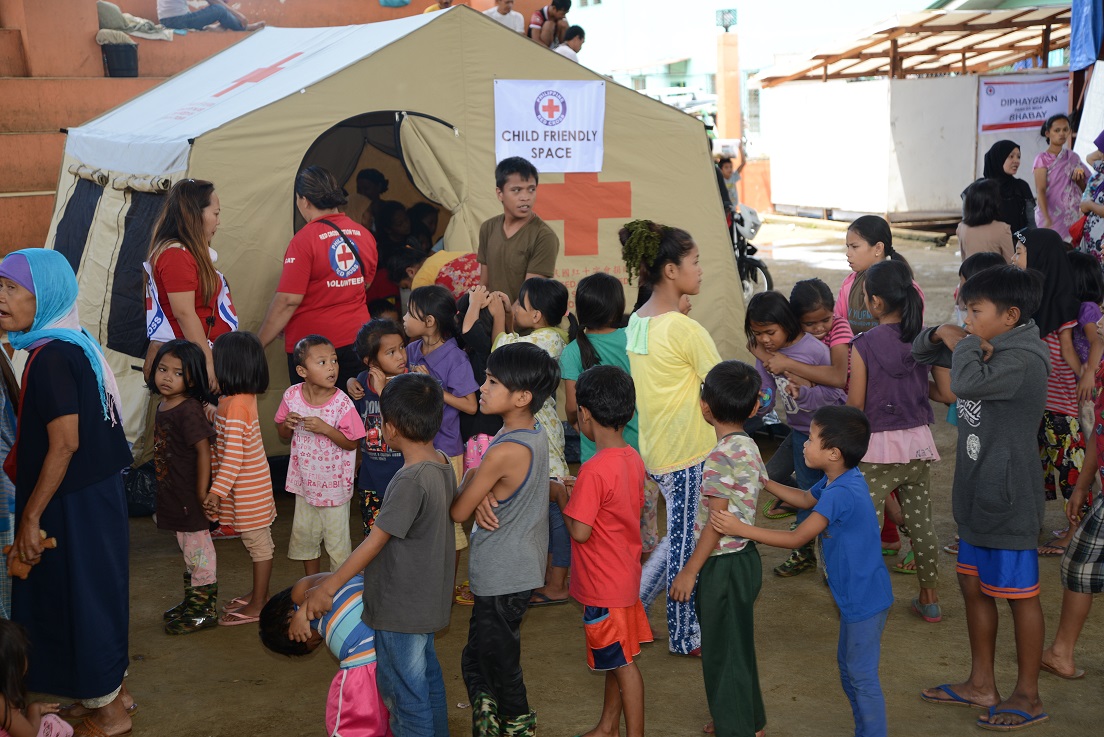
Credit: OCHA/R. Cereneo Saguiaran, Lanao del Norte (11 July 2017) - A child-friendly space provided by the Red Cross in Saguiaran, one of the evacuation centres where humanitarian support has been concentrated.
Displaced people voice a preference for cash assistance
Now in their third month of displacement, some IDPs have expressed preference for cash assistance over in-kind support that will give them the option of buying fresh food or meeting other priority needs of the family. A 43-year-old who fled with his wife and four children from Marantao municipality to an evacuation centre in Balabagan municipality says, “Cash would enable us to buy what we need, such as fresh produce. We are starting to develop skin rashes from eating the same meal provided in food packs for the last two months."
A number of good practices and lessons have been documented on cash transfer programmes that helped IDPs affected by the armed conflict that erupted in Zamboanga City in September 2013. Building on such experiences, the Philippines Humanitarian Country Team —comprising UN agencies, international NGOs and a national NGO network —is supporting DSWD to establish guidelines on standards for cash payouts and vouchers, cash-for-work programmes and other elements of cash transfer programming.
Humanitarian aid to continue amidst government’s shift to rehabilitation and recovery
The majority of the displaced people were unprepared for a conflict that will last for more than a few days. Many are eager to learn about the government’s plan for relief and longer-term support for housing, livelihood and ultimately their return home.
The Congress on 22 July approved the President’s request to extend martial law and the suspension of the privilege of the writ of habeas corpus in entire Mindanao from the initial 60-days, or until 22 July, to until 31 December in order to restore public order and safety.
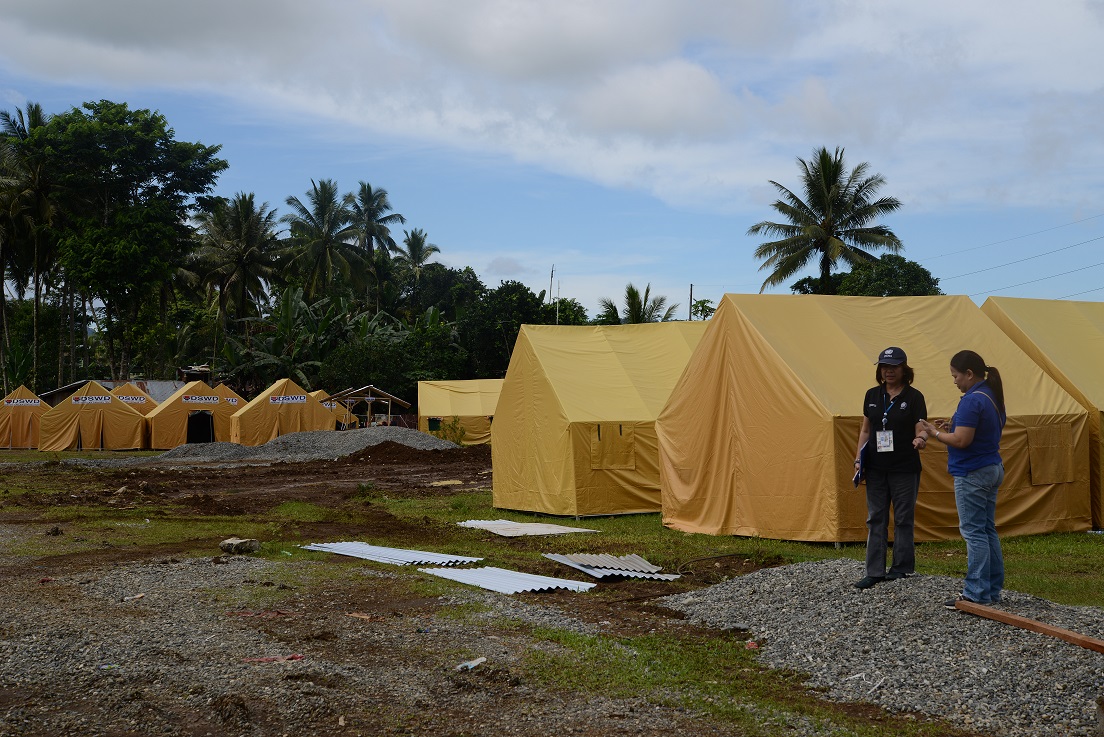
Credit: OCHA/R. Cereneo Pantar, Lanao del Norte (11 July 2017) - The Department of Social Welfare and Development has set up tents to shelter the displaced currently staying at the Madrasa Campong in Pantar, Lanao del Norte, so that the Madrasa could be used by students.
The President also established an Inter-Agency Task Force for the Recovery, Reconstruction and Rehabilitation of the City of Marawi and Other Affected Locations, also known as Task Force Bangon Marawi (“Rise up, Marawi”), on 28 June. The Task Force is led by the Department of National Defense and will develop and implement a comprehensive rehabilitation and recovery programme based on a post-conflict needs assessment, which will begin on 8 August.
Task Force Bangon Marawi and respective regional authorities will gather in Cagayan de Oro City on 12 August to plan a smooth transition from relief to recovery with the support of the Humanitarian Country Team. Steps to address needs in shelter, protection and return will be discussed. Humanitarian responders are keen to ensure that humanitarian needs are integrated into the Task Force’s initiatives as the displaced people and host communities continue to require immediate relief across all sectors.
The Philippines Humanitarian Country Team —comprising UN agencies, international NGOs and a national NGO network —is supporting DSWD to establish guidelines on standards for cash pay-outs and vouchers, cash-forwork programmes and other elements of cash transfer programming.
Hearing the voices of the vulnerable: community engagement in Marawi
Two months after the Marawi conflict erupted, internally displaced persons (IDPs) are still in evacuation centres or staying with family or friends, waiting to return home. Their stay is prolonged in spaces meant for temporary evacuation, and face further insecurity with their jobs, access to basic services, and their community networks.
OCHA together with Initiatives for Dialogue and Empowerment through Alternative Legal Services (IDEALS) conducted interviews on 16 and 24 July. IDPs voiced the urgent need to be included in the decision-making and planning process related to their displacement. They want an opportunity to give feedback and ensure that various agencies providing support have accountability mechanisms in place in the evacuation centres.
“We simply can’t stay here at the evacuation site or accept that we might stay longer without the government or other agencies telling us what is going on. We are at a loss. Information about what the government and other agencies are doing is limited. We are not even consulted on what we need or what our other concerns are. It hurts us a lot.” Norly, 36-years old, mother of five said.
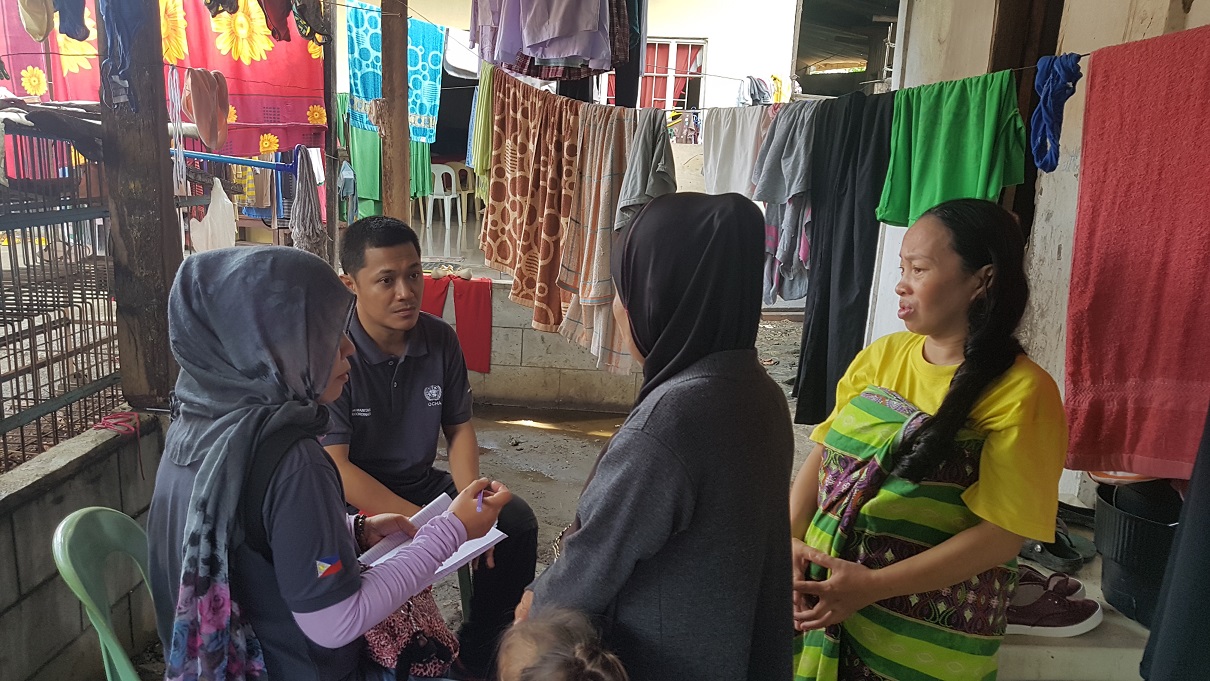
IDPs express their needs and concerns
The Information, Communication, and Accountability Assessment (ICAA) was part of a survey of evolving needs of the affected population displaced by the Marawi conflict. Interviews were conducted in the Ceanuri settlement site in Barangay Tomas Tomas Cabili, Moonerah Integrated School in Barangay Ubaldo Laya, and Barangay Mahayahay which hosts home-based evacuees.
Displaced persons consulted are also waiting for any feedback on their expressed priority needs and concerns. These include medicine, fresh food, education of their children and information on how to avail of cash assistance. While waiting for their return to Marawi City, the displaced also raised the issue on what alternative livelihood programmes would be available for them while in Iligan City.
“Hopefully, there will be no discrimination as Muslim Maranaos if we look or avail of any livelihood programmes here in Iligan. If we don’t have any assurance on when we can go back home, then it is important for us to have money since the aid provided to us is not enough. It will never be enough; we accept that fact. Besides, we never had the same opportunity as with other evacuation centres in terms of aid provided by the government and other agencies. Why is that?” Koi, 24 years old, married with three children and who used to be a tricycle driver, lamented during the interview.
Preferred communication channels by IDPs
Ceanuri is housing around 226 families while Moonerah, 209. There are close to a hundred home-based evacuees in Barangay Mahayahay. The main source of information of these displaced communities is their religious leader (locally known as Ustadz) and their preferred channels for communication are face-to-face dialogue, community assembly, use of humanitarian radio programming, via S’Bang Ka Marawi or Rise-up Marawi, and mobile texts or phone calls.
Displaced persons in Ceanuri and Moonerah have organized themselves as community-based evacuees instead of staying at identified evacuation centres.“We don’t like our situation and we definitely we don’t want to be here but not giving us the opportunity to be heard is even more insulting. We could understand how limited the resources of the government are because I work with the local government in the City of Marawi. I know the challenges. But please hear us in terms of issues we’re dealing with. The thing is most evacuation centres identified cannot accommodate us anymore. So where shall we go?” Nadz, 44 years old said.
Gaps in closing the feedback loop
In the three evacuation sites, there is a limited platform for affected communities to provide feedback to any concerned government agency and humanitarian organization. A help line with dedicated staff can help address various concerns and other issues affecting their welfare including fear of staying longer in the community-based evacuation sites. The humanitarian radio programming is currently the most effective platform in terms of providing avenues for the affected communities to directly voice their concerns but not all have access at this point.
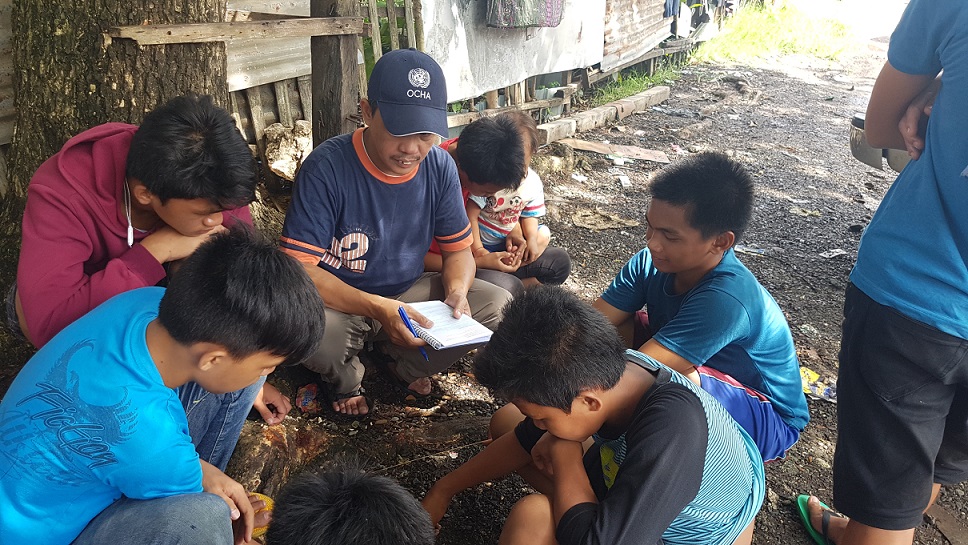
The affected population in evacuation sites in Iligan City conveyed that they are in great need for information related to the distribution of continuing humanitarianassistance by both government and other humanitarian agencies.
Their preferred channels for communication are face-to-face dialogue, community assembly, use of humanitarian radio programming, via S'Bang Ka Marawi, and mobile texts or phone calls.
Philippines pursues international search and rescue team certification
The Government of the Philippines is progressing in its bid to increase its capacity for preparedness and response, particularly in the field of urban search and rescue (USAR). With the aim to help establish a national team classified by the International Search and Rescue Advisory Group (INSARAG), a follow-up capacity assessment mission was conducted during 26-28 July by Japan and Australia. This mission was supported by OCHA, which serves as a secretariat of INSARAG. Classification would allow the Philippines to join more than 40 teams worldwide that can deploy under the UN to respond to earthquake emergencies.
USAR teams from the Philippine Army, Philippine Air Force, and the private/civil society Emergency Rescue Unit Foundation (ERUF) will form a composite Philippine disaster relief team which will aim for a medium INSARAG classification.
Japan and Australia, requested by the Philippines to provide technical assistance through a mentorship programme, stressed that “it can take a number of years for an international USAR team to complete the classification process.” The scoping mission further underscored that INSARAG is a community of practice that continuously learns from its members. It welcomes the lessons and best practices which the Philippines can provide from its experiences in responding to disasters.
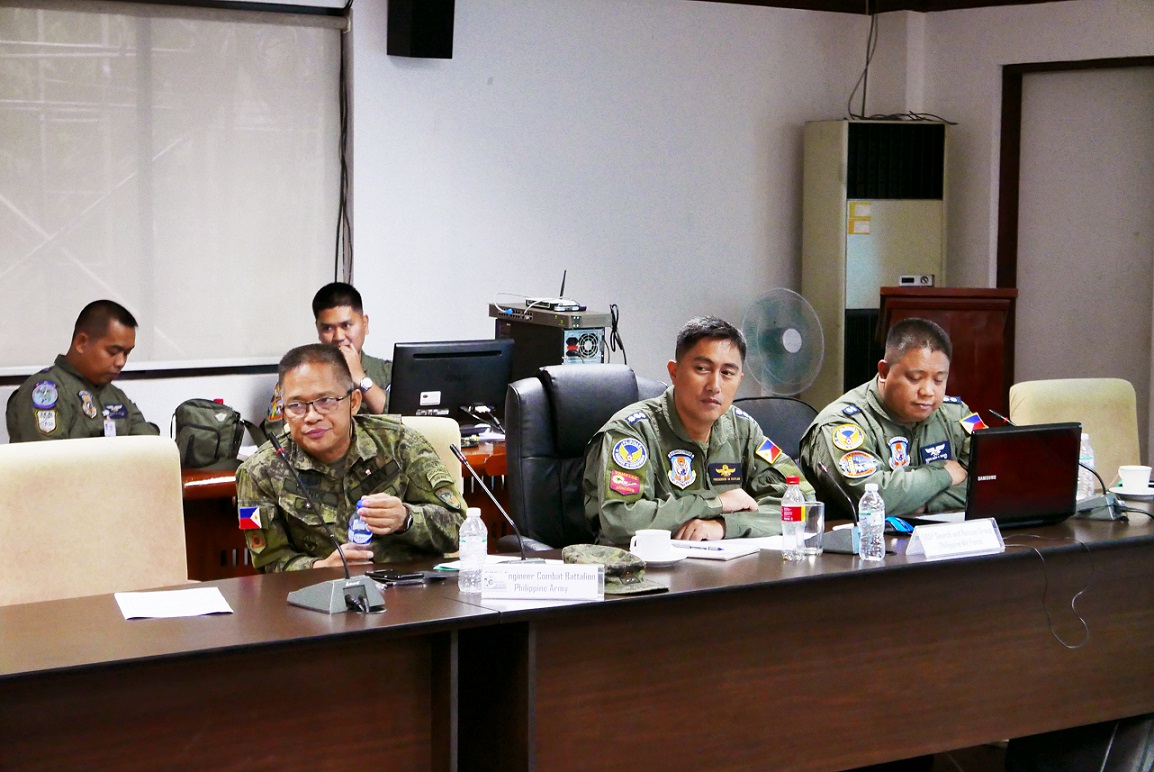
“We continue to remain committed in pursuing the classification process not only to further improve the USAR capability in the Philippines, but also to reciprocrate the assistance which the country has received from international partners in past disasters,” Undersecretary Ricardo Jalad declared during the end of mission debrief. He also confirmed that the Philippines will host the INSARAG Asia-Pacific Regional Earthquake Response Exercise in 2018.
The Philippines will host the Asia-Pacific Regional Earthquake Response Exercise in 2018.
OCHA partners with Rappler with interactive humanitarian data on Agos web platform
Information about the most likely hazards facing the country, who are the most vulnerable, and where they are located is a vital part of disaster preparedness. OCHA's interactive pre-disaster profile of Philippine provinces and Mindanao displacement snapshot will be used on Agos, a disaster risk reduction platform. The site is run by Rappler’s civic engagement arm, MovePh, and powered by Ateneo de Manila University’s eBayanihan mobile and web management system.
The merging of OCHA’s interactive data with Agos’ civic engagement platform puts pre-disaster humanitarian information in the hands of more people. “Information management is one of the key pillars of effective coordination and response. We make humanitarian information shareable and freely available on a platform that’s accessible by more people,” say Mark Bidder, OCHA Philippines Head of Office. “The more granular and useful the information we arm ourselves with before a disaster strikes, the better the response.”